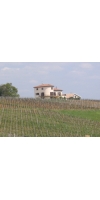Wine from Cote Rotie Lamothe

The Cotie Rotie Lamothe Estate
The winery was founded in the early 1900's and is now owned by Serge and Ingrid Capdeville. It is located in the village of Cote Rotie in Langoiran. The name in this area predates the Rhone Valley appellation of Cote Rotie, which allows them to use the phrase in their name.
The Cotie Rotie Lamothe Vineyard
This 10 hectare vineyard (24.7 acres) is located on a hillside with a southern exposure. The soil is a mix of clay, limestone and gravel.
No products found
- back
Selected Options
Wineries
Categories
Pricing
Countries
Regions
Grape Types
Wineries
Organic/Free Shipping
Roederer Estate L'Ermitage Brut is made from 52% Chardonnay, 48% Pinot Noir.
The 2019 features aromas of quince paste and light pastry crust. The entry is bright and textured midpalate. A mouthwatering finish is highlighted by pear skin and an even, creamy texture.
Review:
If sunshine could be bottled it would be this. Aromas of fresh succulent stone fruit, a hint of yeast, citrus blossoms and notes of quince on the nose. The mousse is creamy and light with baked red apples, blood orange zest, white grapefruit, sticky caramel and layered salinity with a mouthwatering finish. It will bring a smile to your lips.
-Wine Enthusiast Cellar Selection 100 Points




